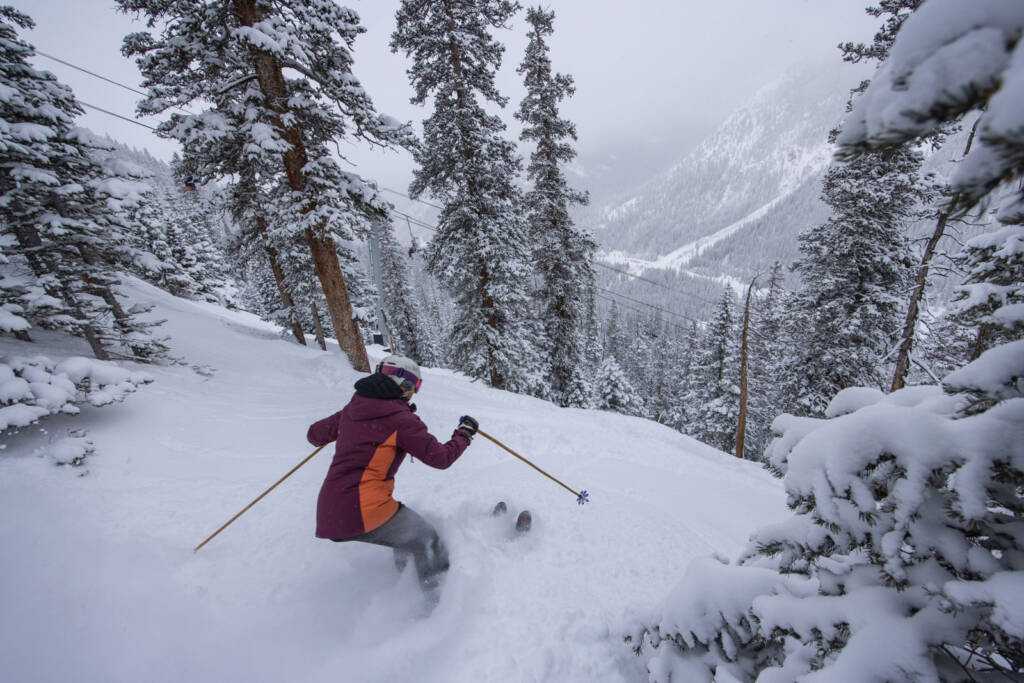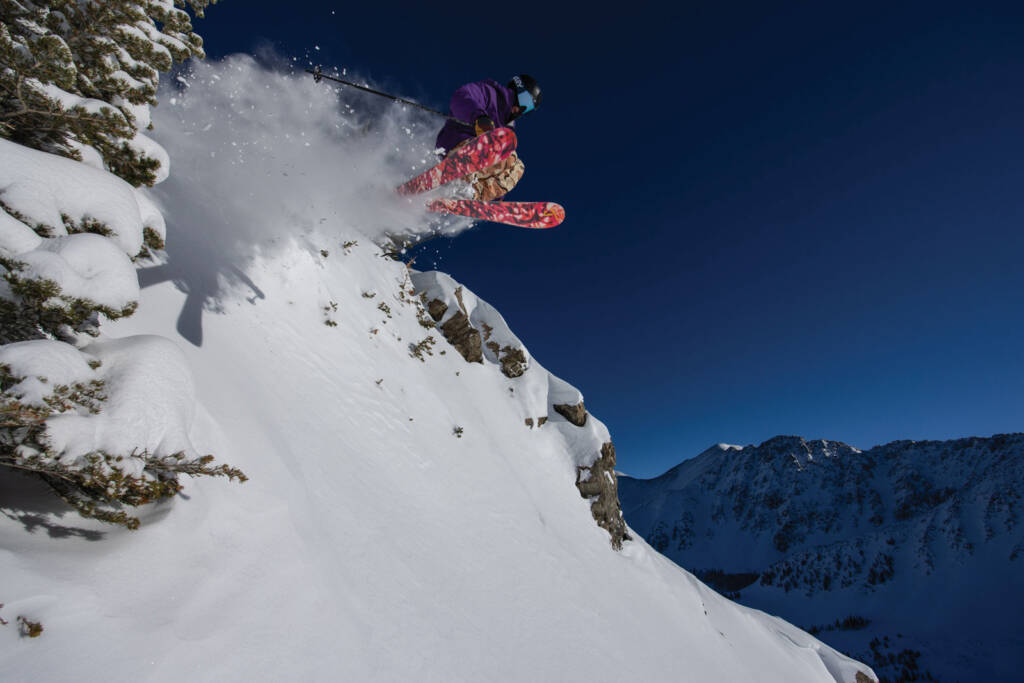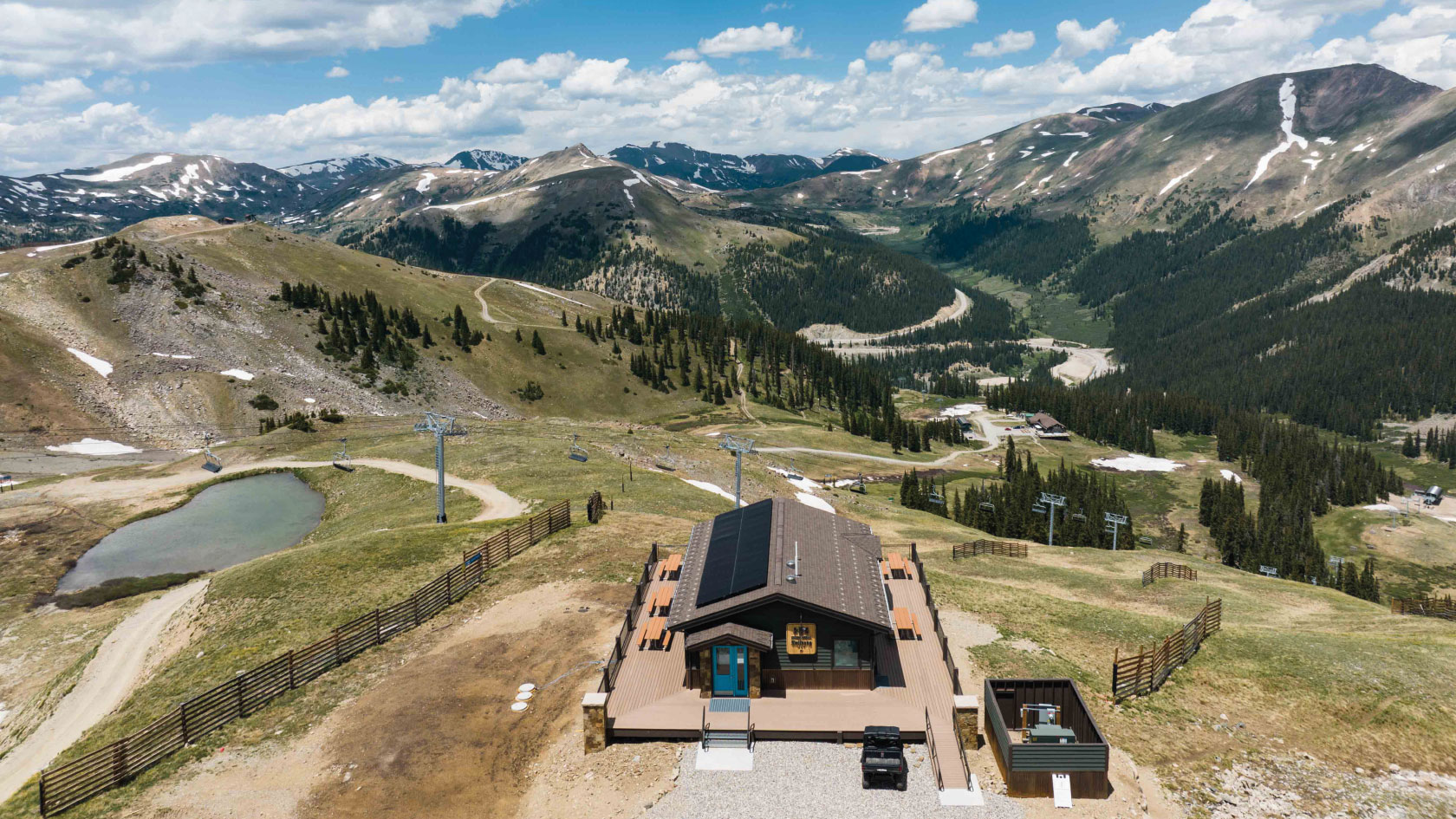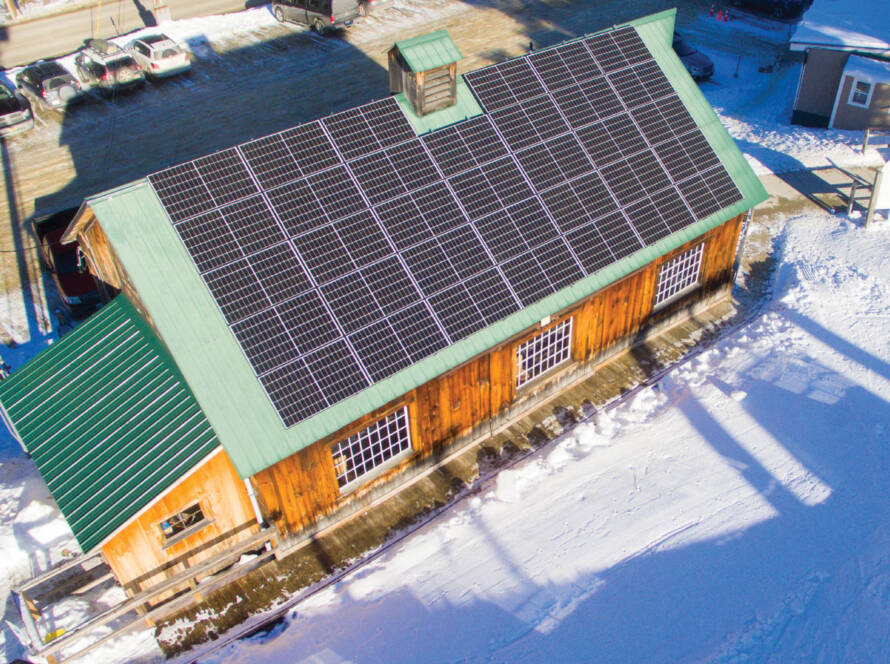After setting a goal to reach carbon neutrality by 2025, Arapahoe Basin Ski Area in Dillon, Colo., achieved this milestone ahead of schedule in late 2023.
Arapahoe Basin, co-founder of the National Ski Area Association (NSAA), has been involved with ski area sustainability since the early 2000s and developed an official sustainability plan in 2018. The plan outlined seven goals: 100% renewable electricity, 75% waste diversion, no net increase in water usage, responsible procurement, ecosystem and wildlife conservation, increased transportation efficiency and carbon neutrality by 2025.
With an initial focus on reducing on-site emissions through energy, water and building efficiency retrogrades, Arapahoe Basin achieved 100% renewable electricity in October 2023, and pre-emptively offset 2023–24 ski season Scope 1 emissions based on emissions from the previous season. At the end of the season, any disparity in emissions will be made up by purchasing additional offsets or putting an offset in the bank for the following season. Scope 1 emissions are from sources that an organization owns or controls directly.
“We are so fortunate to work with Xcel Energy as our utility provider,” said Helena Robinowitz, sustainability coordinator at Arapahoe Basin Ski Area. “Not only is their certified renewable percentage 44.3%, but they also offer Renewable Connect and Renewable Connect Flex subscription programs, which allows us to utilize electricity solely from solar and wind.

These programs, in addition to on-site photovoltaics (PV) on three of our buildings and our partnership with Jack’s Solar Farm, a local solar garden in Longmont, allow us to obtain our electricity from 100% renewable sources. By doing so, we eliminated 1,895 metric tons of carbon, leaving us with only around 950 metric tons of Scope 1 emissions to offset.”
Arapahoe Basin offset those emissions through Terrapass, a third-party offset provider. Carbon offsets are credits purchased to compensate for one’s CO2 emissions by investing in projects elsewhere. Two of the main challenges a ski area faces are electrification and the need to use snow grooming machines for long ranges in intense cold and on steep terrain.
“Because we are a ski area, we do need snowcats, bobcats and snowmobiles to operate,” said Robinowitz. “While the long-term goal is to fully electrify our fleet, and we are in the process of doing so, we do need to use diesel snow vehicles at this time. Because of that, we decided to offset our remaining emissions. We chose Terrapass as our offset partner because all of their offsets are verified through multiple third-party standards and they offered a customized portfolio of U.S.-based projects.”
Arapahoe Basin leased an electric snowcat and some electric snowmobiles early this year.
“Making the jump to replace diesel vehicles with new [electric vehicle] versions with limited range must be done carefully,” said Robinowitz. “We know that offsetting can be considered controversial, so we intentionally are supporting a variety of U.S. projects with a multitude of environmental, biodiversity and outdoor recreation co-benefits that would do net-good while we use the offsets as a self-tax to incentivize ourselves to reduce our remaining Scope 1 emissions.”
“The direct benefits of achieving carbon neutrality are in the culture, education and advocacy of our operation, in the ski industry and in our Summit County community.”
Helena Robinowitz, Arapahoe Basin Ski Area
Every month, Arapahoe Basin, working with its parent company DREAM, reviews its electricity, propane, fuel, diesel and waste bills and tracks data in a spreadsheet. All offsets are verified through the Gold Standard, Verra, The American Carbon Registry and The Climate Action Reserve.
Arapahoe Basin participates in the NSAA Climate Challenge every year. The challenge aims to hold ski areas accountable for their carbon emissions while highlighting various emission-reducing projects and advocacy work done across the continent.
“The direct benefits of achieving carbon neutrality are in the culture, education and advocacy of our operation, in the ski industry and in our Summit County community,” said Robinowitz. “Achieving carbon neutrality created positive environmental benefits not only in our community, but across the U.S. Our carbon offsets have a multitude of biodiversity, ecosystem and outdoor recreation co-benefits for projects around the country.
We get to do a lot of education and spreading the word about sustainable practices, from waste sorting stations, on-site PV, solar tubes and compost toilets to LED lighting and wetlands; our guests from around the world interact with sustainability initiatives everywhere they go at the ski area and we hope they take what they learn here home with them.”
Now that carbon neutrality has been achieved, Arapahoe Basin isn’t just known as a sustainable ski area, but a leader in the industry and a sustainable enterprise in business sectors, presenting at conferences and summits, and working with graduate students from the University of Denver and the University of Colorado Boulder to inspire the next generation of sustainability leaders.
Members of Arapahoe Basin are also embarking on a variety of advocacy trips. For example, Tony Cammarata, director of development and planning, recently participated in a trip to Washington, D.C., to encourage lawmakers and members of Congress to require publicly traded businesses to report and disclose Scope 1 and Scope 2 carbon emissions.

Achieving carbon neutrality has been a huge win for Arapahoe Basin and its employees, says Robinowitz.
“Our day-to-day success depends on each and every employee,” said Robinowitz. “People feel even more invigorated to continue to prioritize sustainability in their work, especially with the re-vamp of an employee Green Team, employee sustainability club and newsletter. We have also had an increase in employee-centered sustainability events, such as the winter sustainability employee party, various mountain cleanups and a clothing swap.”
Arapahoe Basin collaborates with other ski resorts, such as Copper Mountain, Taos Ski Valley and Snowbird. The ski area sustainability community comes together several times a year to share best practices and methods for such things as energy tracking, water monitoring and ecosystem stewardship methods.
“Achieving carbon neutrality, thanks to the partnership with Terrapass, is great for us, but definitely not the end of our climate action journey,” said Mike Nathan, sustainability manager, Arapahoe Basin Ski Area. “After getting to 100% renewable electricity last year, and with viable carbon-free systems nearly within our grasp, we now know for sure that our real goal of net zero, carbon-free operations is just over the horizon. These offsets simply allow us to do some good in the meantime, while the cost of supporting these projects every year financially motivates us to finish the job.”
Arapahoe Basin Ski Area plans to set new targets for 2025, continue increasing on-site initiatives and engage in advocacy work. It plans to maintain carbon neutrality in the future by continually reducing Scope 1 emissions and offsetting the remainder.
Every ski area has its own unique circumstances, but each can do their best to maximize sustainability initiatives, says Robinowitz. Arapahoe Basin expanded waste diversion initiatives to include more hard-to-recycle items, such as latex glove recycling through Terracycle, and to include skis and snowboards in an employee takeback program. Employees and guests are encouraged to share sustainability ideas, comments or questions.
“Achieving carbon neutrality doesn’t necessarily make sense for every ski resort operation,” said Robinowitz.”But engaging and investing in sustainability, both on-site and through advocacy, is achievable for all, and there are so many metrics of sustainability success outside of the emissions world to aim for.”


